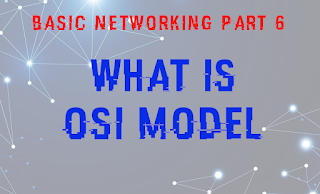Read the All Part of Our Basic Networking Series
What is OSI Model?
Introduction
The Open Systems Interconnection Model (OSI Model) is a theoretical framework for describing the functions of a networking system. In order to facilitate interoperability between diverse devices and applications, the OSI model describes computing functions into a universal set of rules and standards. The connections between computing systems are divided into seven abstraction levels in the OSI reference model: Physical, Data Link, Network, Transport, Session, Presentation, and Application.
The OSI was published in 1984 by the International Organization for Standardization at a period when network computing was still in its infancy (ISO). The OSI Model is still used to explain network architecture today, even if it does not always map exactly to real systems.
The 7 Layers of the OSI Model
Physical Layer
The OSI Model’s lowest layer is concerned with electrically or optically passing raw unstructured data bits over the network from the sending device’s physical layer to the receiving device’s physical layer. Voltages, pin arrangement, cabling, and radio frequencies are examples of specifications. Network hubs, cabling, repeaters, network adapters, and modems are examples of “physical” resources found at the physical layer.
Data Link Layer
Directly connected nodes are utilized at the data connection layer to perform node-to-node data transfer, in which data is bundled into frames. Errors that may have happened at the physical layer are also corrected by the data link layer.
Network Layer
Receiving frames from the data link layer and delivering them to their intended destinations based on the addresses contained within the frame is the responsibility of the network layer. Logic addresses, such as IP addresses, are used by the network layer to locate the destination (internet protocol). Routers are a critical component at this tier, as they literally route data where it needs to go between networks.
Transport Layer
The transport layer is in charge of data packet delivery and error checking. It controls the size, sequencing, and, ultimately, data transit between systems and hosts. TCP, or Transmission Control Protocol, is one of the most frequent transport layer instances.
Session Layer
The session layer is in charge of coordinating conversations between computers. At layer 5, a session or connection between machines is established, managed, and terminated. Authentication and re-connections are also part of the session layer services.
Presentation Layer
Based on the syntax or semantics that the application accepts, the presentation layer formats or converts data for the application layer. As a result, it’s sometimes referred to as the syntactic layer. This layer can also handle the application layer’s encryption and decryption needs.
Application Layer
Both the end user and the application layer interact with the software application directly at this tier. End-user programmers, such as a web browser or Office 365, receive network services through this layer. The application layer locates communication partners, determines resource availability, and coordinates communication.
Conclusion
The theoretical OSI Model is used, on a daily basis, throughout the industry as it is an essential building block for when it comes to creating and troubleshooting applications and infrastructures. Follow the data down the layer to see how it’s transported and handled by systems and networks.
Love our articles? Make sure to follow us on Twitter and GitHub, we post article updates there. To join our KaliLinuxInfamily, join our Telegram Group and Whatsapp Channel. We are trying to build a community for Linux and Cybersecurity. For anything we always happy to help everyone on the comment section. As we know our comment section is always open to everyone. We read each and every comment and we always reply.
Source: Read More





